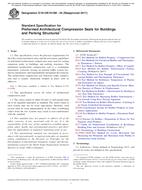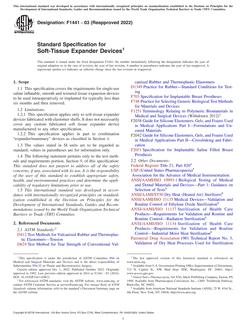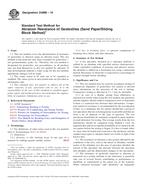1.1 This practice covers procedures for irradiations at accelerator-based neutron sources. The discussion focuses on two types of sources, namely nearly monoenergetic 14-MeV neutrons from the deuterium-tritium T(d,n) interaction, and broad spectrum neutrons from stopping deuterium beams in thick beryllium or lithium targets. However, most of the recommendations also apply to other types of accelerator-based sources, including spallation neutron sources (1). Interest in spallation sources has increased recently due to their proposed use for transmutation of fission reactor waste (2).
1.2 Many of the experiments conducted using such neutron sources are intended to simulate irradiation in another neutron spectrum, for example, that from a DT fusion reaction. The word simulation is used here in a broad sense to imply an approximation of the relevant neutron irradiation environment. The degree of conformity can range from poor to nearly exact. In general, the intent of these simulations is to establish the fundamental relationships between irradiation or material parameters and the material response. The extrapolation of data from such experiments requires that the differences in neutron spectra be considered.
1.3 The procedures to be considered include methods for characterizing the accelerator beam and target, the irradiated sample, and the neutron flux and spectrum, as well as procedures for recording and reporting irradiation data.
1.4 Other experimental problems, such as temperature control, are not included.
1.5 This standard does not purport to address all of the safety concerns, if any, associated with its use. It is the responsibility of the user of this standard to establish appropriate safety and health practices and determine the applicability of regulatory limitations prior to use.
Product Details
- Published:
- 01/01/1996
- Number of Pages:
- 12
- File Size:
- 1 file , 150 KB


